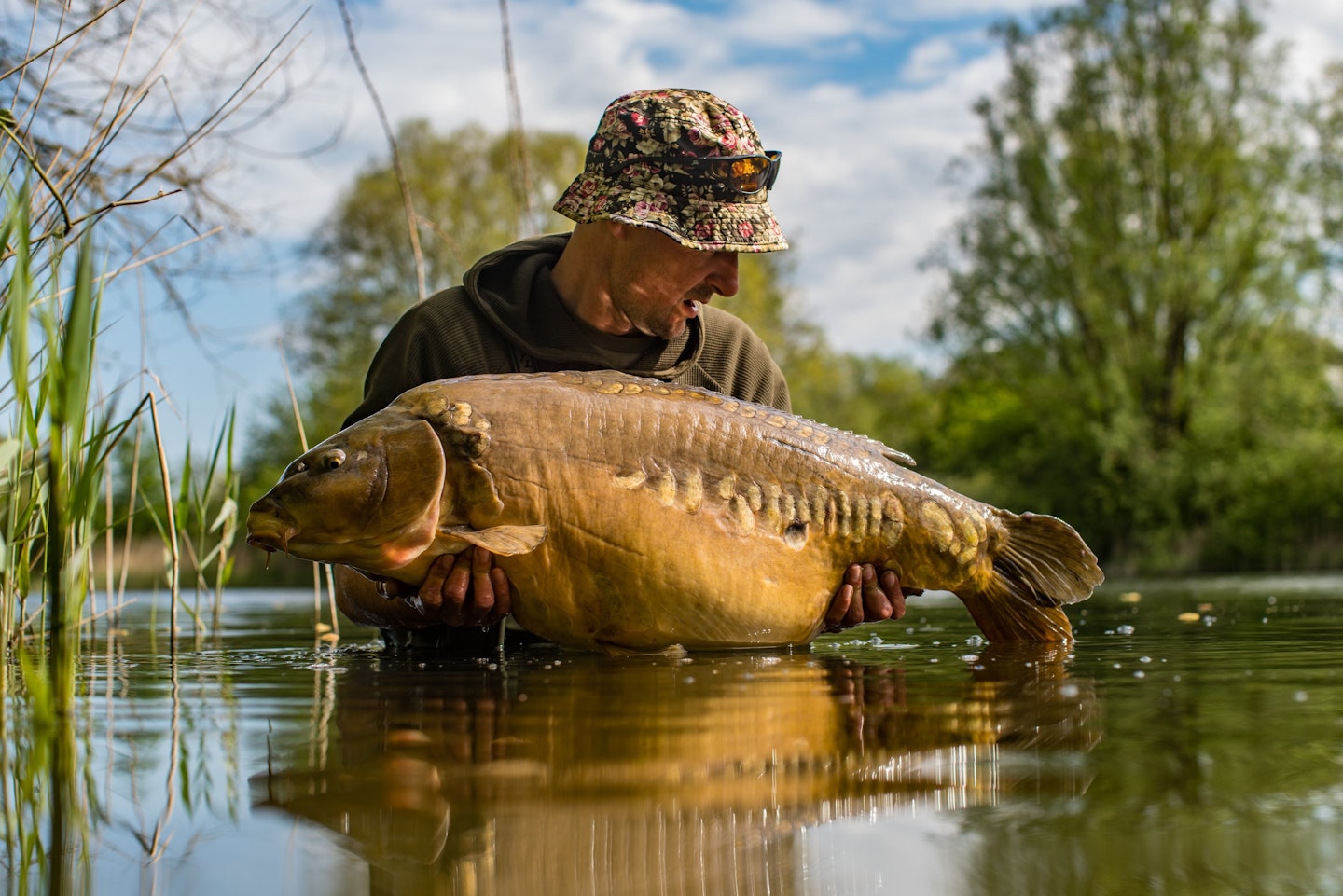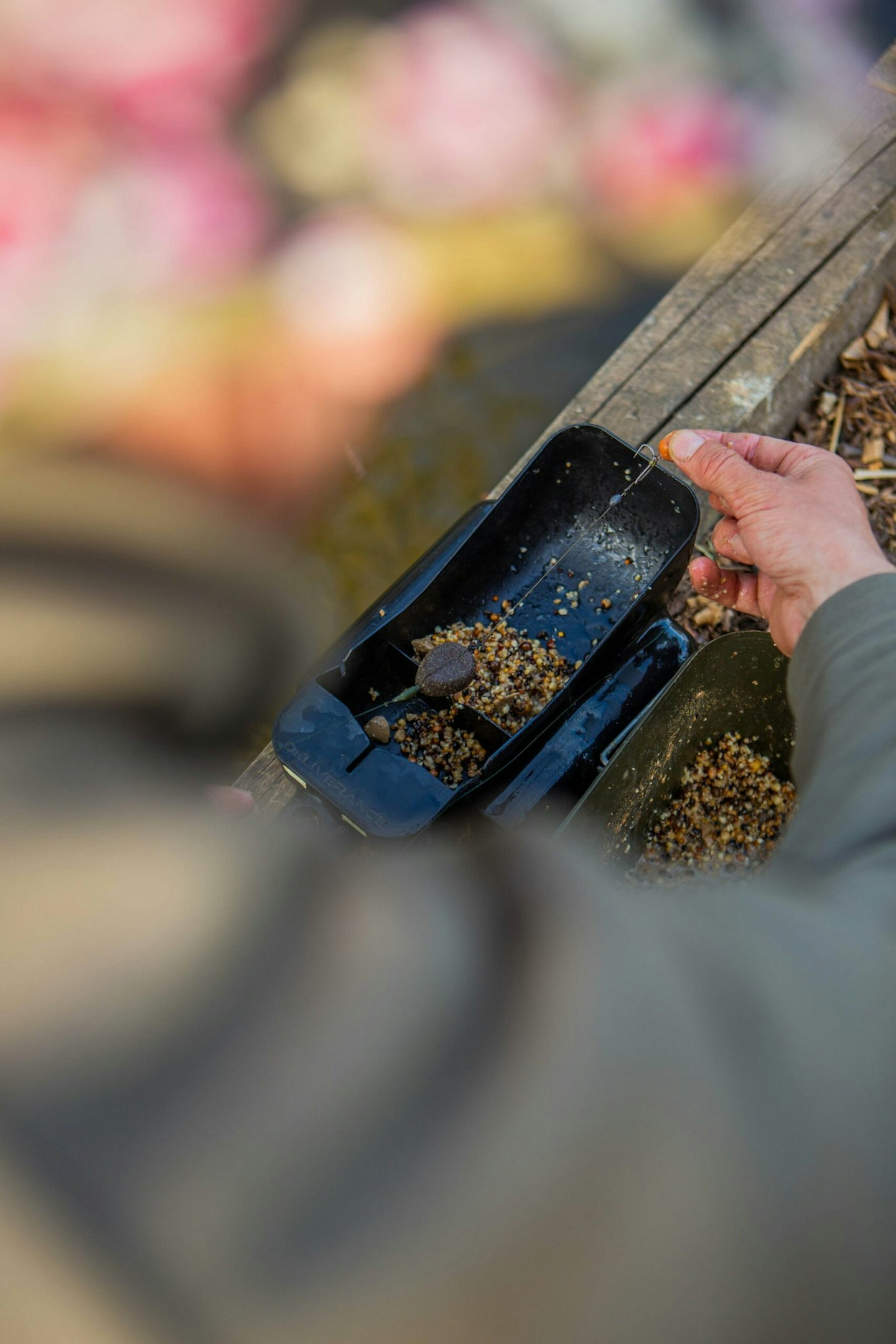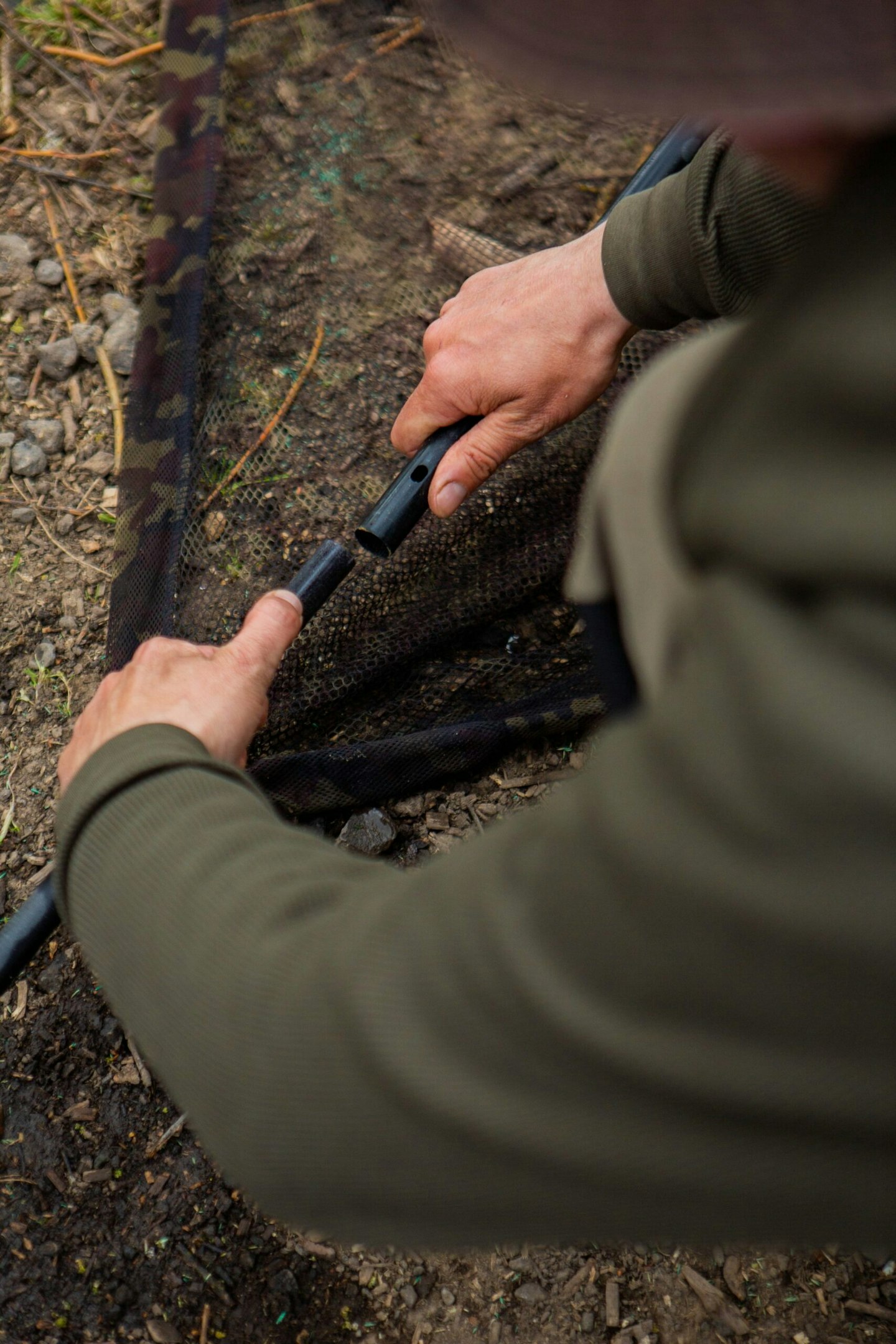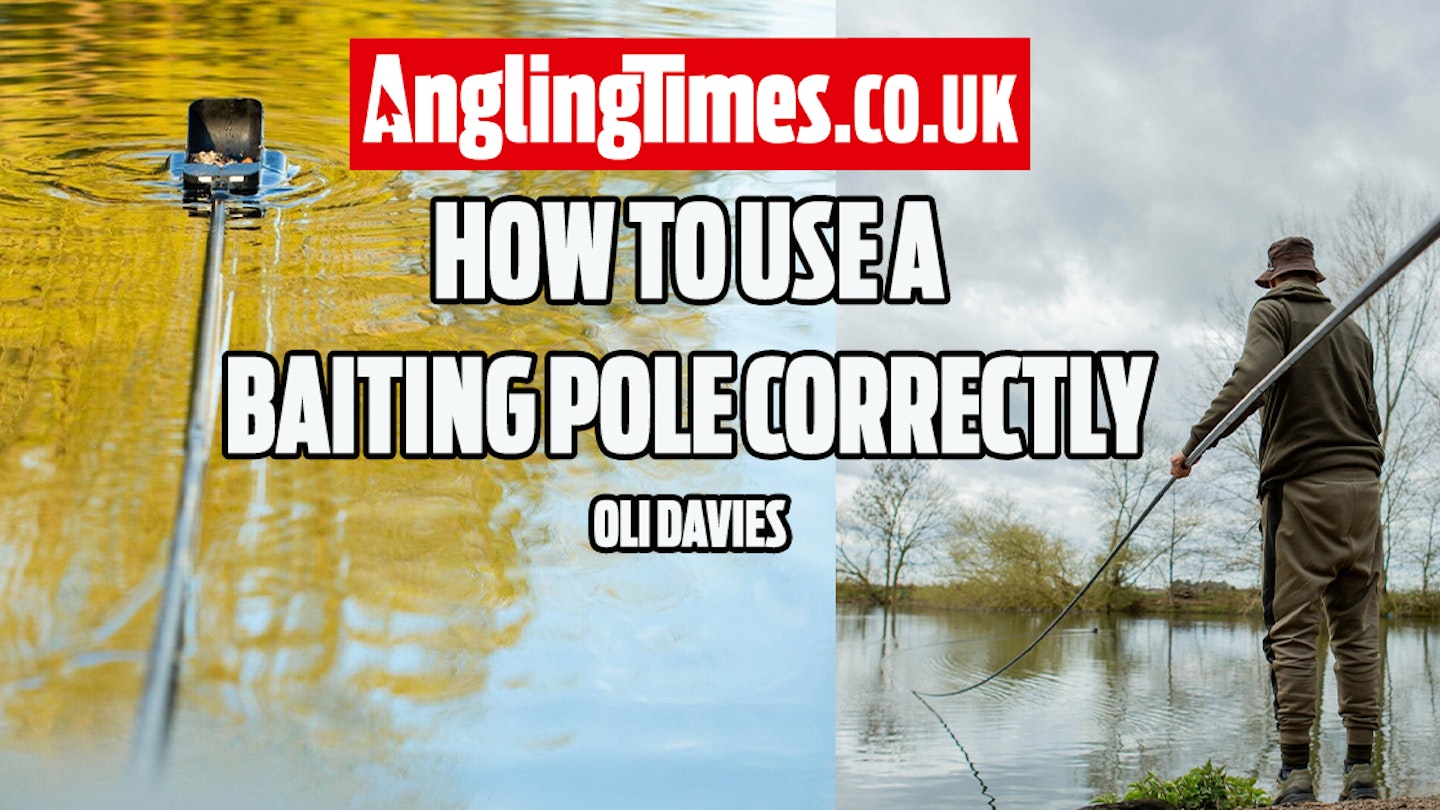Part of the reason I fish in the edge a lot is that I’m guaranteed good presentation and can bait super-accurately, which allows me to fish confidently. Baiting poles are a way to replicate the accuracy and confidence you get at close range, but out in the lake.
For many, a baiting pole is seen as something to use in the margins to tuck under a bush, but with a longer pole there’s so much more you can use it for.

On weedy lakes it can be used to accurately drop rigs and bait into small holes. It’s effective when used for dropping your rig right on top of feeding fish, too, where casting and catapulting bait would have spooked them, leading to quick bites – sometimes even before the pole has been shipped back!
The stealth element is a real game-changer on pressured waters where the fish don’t like being cast at. It’s possible to set a trap near or among fish without them being aware that they’re being fished for, and not just in close to the bank either.
FIND MORE GREAT TACKLE TO IMPROVE YOUR CARP FISHING BY CHECKING OUT OUR BUYER'S GUIDES TO RODS, REELS, ALARMS, BIVVIES AND MORE.
It can also be used to place rigs tight to features, far margins and under overhangs – you’re only limited by the number of sections you have.
Since I first got my hands on a Bushwhacker prototype four years ago, it’s become indispensable and now plays a large part in my fishing. It’s led to me catching fish I wouldn’t have otherwise caught at home and abroad up to distances of 80m! It’s taken a while to get used to it properly and get the hang of the technique of using it at longer ranges. As with anything, the more you practise, the better you get. Here are a few tips to help you out…

Don't overload
Remember that you’re fishing for one bite at a time, so think carefully how much bait you’re going to need to get that bite. Nothing is wasted with the spoon so, often, it’s not a lot at all, and you’ll just have to wait longer for a bite or risk sinking the spoon by overfilling it.

Load the line towards the rod
To ensure I always tip the Bushwhacker head the right way, I make sure I run the leader out of the side where the rod is. That way I always tip towards the rod and there’s no chance of getting muddled.
Assemble in and out of the bag
Avoid double handling sections and minimise the amount of dirt that gets in the joints by placing the carry bag behind where you need the pole to be and ship it out, and straight back into the bag.
Work with multiples
Rather than adding a section at a time, I work in multiples of four, five and six, depending on how much room there is behind me. Its faster, quieter, smoother and more accurate to do this.
HERE'S MORE GREAT TIPS FROM ANOTHER MEMBER OF THE NASH TACKLE TEAM FINLEY TODHUNTER.

Light it up
After dark, keep track of your head by adding reflective or glow-in-the-dark tape to the spoon, or even a small light. It also helps to have a bright headtorch to guide it.
Pack it away
In a one-bite situation, or when I won’t need it again, I ship the pole straight back into the bag once the rods are out. Often, I’m fishing off the barrow and it’s much easier to move if the pole is back in the bag!
Add the rig last
The weight of the lead pulls the rig quickly out of the spoon when you flip it, and if it’s buried in a pile of bait there’s a risk of it catching one of the free offerings. I’ve hooked a bit of flake and a tare in the past by putting the bait over the rig.
HERE'S ANOTHER FANTASTIC TIP FOR CARP FISHING BY NASH TACKLE TEAM MEMBER HASSAN KHAN.

Don't PVA it
There’s no doubt that PVA bags are super-effective, and foam can guarantee good presentation. But I’ve had quite a few really quick bites dropping the rig on feeding fish – sometimes as the pole is being shipped back. A bit of PVA foam on the hook would have meant the rig wasn’t fishing immediately and would have cost me those quick bites!
Keep it on track
When shipping out, it pays to constantly adjust the path and keep the Bushwhacker on course. Rather like a skateboard, if you tilt slightly while pushing, it’s possible to steer the head left or right, helping to keep on track as you head for the spot. If the pole begins to take on a bend, a quick shake will straighten it up! The further out you get, the harder it is to make big changes to the direction of the head. Don’t forget to compensate for crosswinds and drift too.

TRY THESE TIPS OUT AT A GREAT CARP FISHING LAKE NEAR YOU IN THIS WHERE TO FISH GUIDE.
